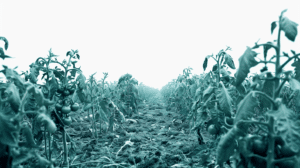Flood Resilience in Agriculture: Safeguarding the Food Supply Chain Amidst Climate Change
In 2022, devastating, historical floods have hit Pakistan’s Sindh Province – a crucial region for rice, cotton, and sugarcane production. Over 18% of the total area was directly inundated, and the estimated loss of rice production was approximately 1.8 million tons, representing an 80% loss of the expected total rice yield. Similarly, cotton production suffered a loss of about 88%, and damage to sugarcane crops amounted to USD 273 million.
Sadly, this is not an isolated incident, as floods are becoming more frequent due to climate change. Floods are no longer rare occurrences, but rather, a recurring phenomenon in many parts of the world. Climate change-induced alterations in weather patterns, such as increased rainfall intensity and rising sea levels, have contributed to the growing occurrence of floods [3]. As a result, rivers overflow their banks and the soil exceeds its absorption capacity, low-lying areas become inundated, and farmland is submerged under water.
Floods and the food supply chain
These catastrophic events not only affect communities and infrastructure but also have a profound impact on agriculture and food supply. The FAO estimates that between 2008-2018, floods have caused $20 billion in damages and losses in the agricultural sector alone. They can lead to the destruction of crops, loss of livestock, and damage to agricultural infrastructure. Floods lead to soil erosion, and the loss of costly inputs such as seeds, fertilizers and chemicals, disrupting entire seasons.
The impact of floods on agriculture has far-reaching consequences for the entire food supply chain, including food and beverage companies. As crop production decreases, above market spend inevitably rises to compensate for losses in contracted yields. Companies in the food industry must adapt to the changing landscape of agriculture to ensure a stable and reliable supply chain.
Flood-Resilient Agronomic Practices
To mitigate the impact of floods on agriculture, farmers and policymakers can implement flood-resilient agronomic practices. These practices aim to improve soil health, enhance water retention, and reduce surface runoff during heavy rainfall. Some key strategies include:
1. Environmentally Friendly Flood Protection Measures:
Measures like adjustments to farming and forestry practices can contribute to flood protection. Practices such as year-round soil cover and diverse crop rotations, common in organic farming, can help maintain soil structure and humus levels vital for flood protection.
2. Water Restoration Areas:
Floodplains and low-lying areas near rivers can serve as water restoration areas during floods. By allowing floods to be redirected to less vulnerable regions, damage to crops and infrastructure can be minimized.
3. Data-Driven Agriculture:
Embracing data-driven agriculture, which utilizes advanced technology and predictive analytics, can help farmers make informed decisions. Real-time data on weather conditions, soil moisture, and crop health can aid in rapidly adjusting farming practices in response to potential flood events.
4. Accurate Yield Estimation:
Accurate yield estimation that considers weather volatility is crucial to ensure cost control and operational continuity. Advanced modelling techniques can help predict crop losses and allow supply chain managers to take timely actions to minimize damage and adjust production logistics in the downstream value chain.
Floods have emerged as a growing and potent menace in a changing climate. As climate change intensifies, the frequency and severity of floods are likely to increase, posing greater challenges to agriculture, food and beverage companies, and the people who rely on them. Addressing flood resilience in agriculture demands collaborative efforts and proactive measures. Mitigating the impact of floods on agriculture and safeguarding stable food supply in the face of a changing climate will require collaborative efforts and proactive measures – yet it is still entirely within food and beverage companies’ grasp.








